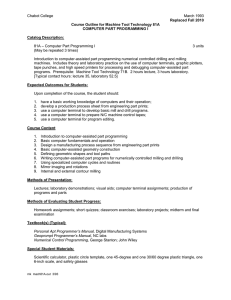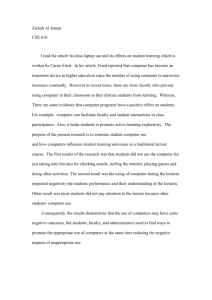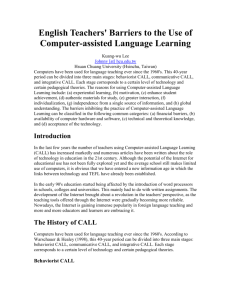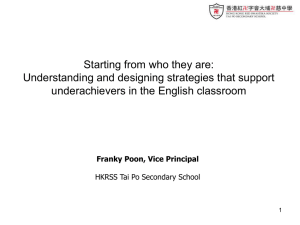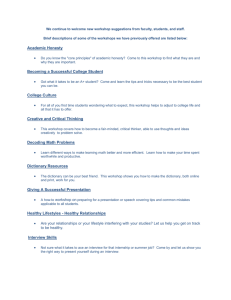The comparative effect of computer
advertisement
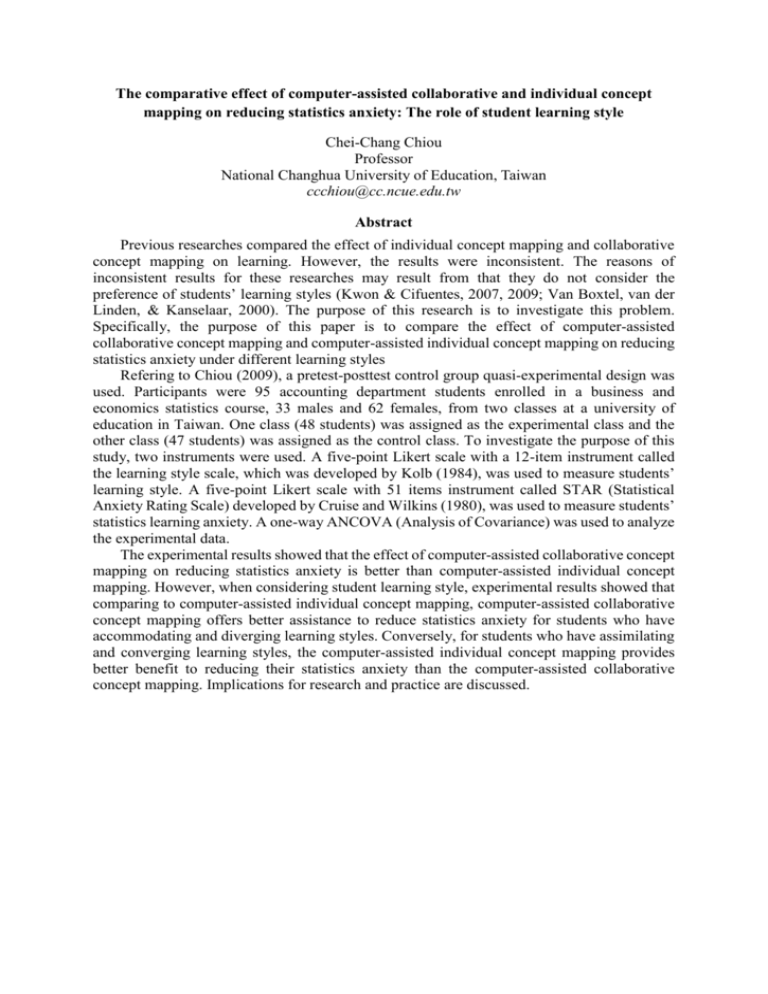
The comparative effect of computer-assisted collaborative and individual concept mapping on reducing statistics anxiety: The role of student learning style Chei-Chang Chiou Professor National Changhua University of Education, Taiwan ccchiou@cc.ncue.edu.tw Abstract Previous researches compared the effect of individual concept mapping and collaborative concept mapping on learning. However, the results were inconsistent. The reasons of inconsistent results for these researches may result from that they do not consider the preference of students’ learning styles (Kwon & Cifuentes, 2007, 2009; Van Boxtel, van der Linden, & Kanselaar, 2000). The purpose of this research is to investigate this problem. Specifically, the purpose of this paper is to compare the effect of computer-assisted collaborative concept mapping and computer-assisted individual concept mapping on reducing statistics anxiety under different learning styles Refering to Chiou (2009), a pretest-posttest control group quasi-experimental design was used. Participants were 95 accounting department students enrolled in a business and economics statistics course, 33 males and 62 females, from two classes at a university of education in Taiwan. One class (48 students) was assigned as the experimental class and the other class (47 students) was assigned as the control class. To investigate the purpose of this study, two instruments were used. A five-point Likert scale with a 12-item instrument called the learning style scale, which was developed by Kolb (1984), was used to measure students’ learning style. A five-point Likert scale with 51 items instrument called STAR (Statistical Anxiety Rating Scale) developed by Cruise and Wilkins (1980), was used to measure students’ statistics learning anxiety. A one-way ANCOVA (Analysis of Covariance) was used to analyze the experimental data. The experimental results showed that the effect of computer-assisted collaborative concept mapping on reducing statistics anxiety is better than computer-assisted individual concept mapping. However, when considering student learning style, experimental results showed that comparing to computer-assisted individual concept mapping, computer-assisted collaborative concept mapping offers better assistance to reduce statistics anxiety for students who have accommodating and diverging learning styles. Conversely, for students who have assimilating and converging learning styles, the computer-assisted individual concept mapping provides better benefit to reducing their statistics anxiety than the computer-assisted collaborative concept mapping. Implications for research and practice are discussed.
